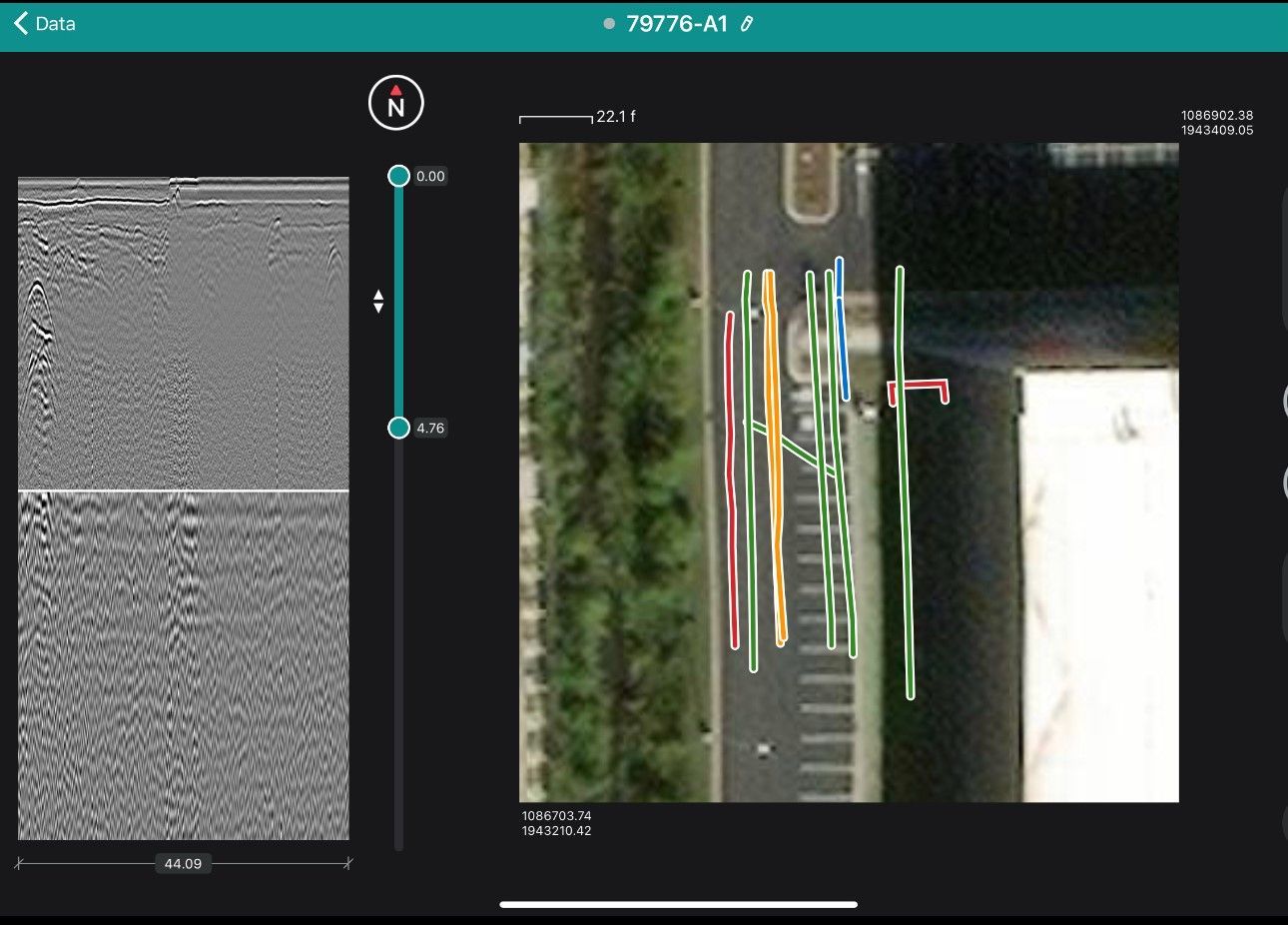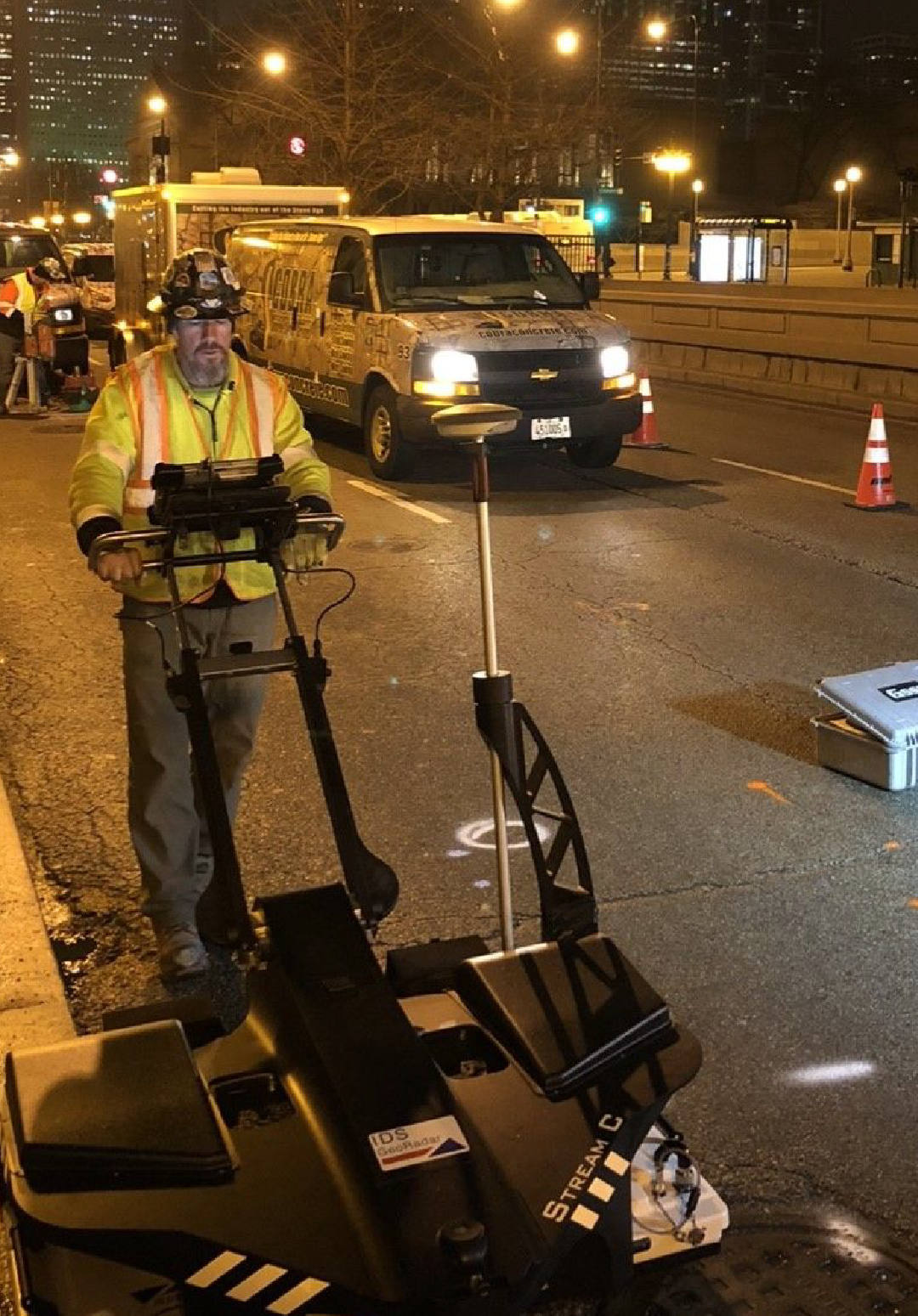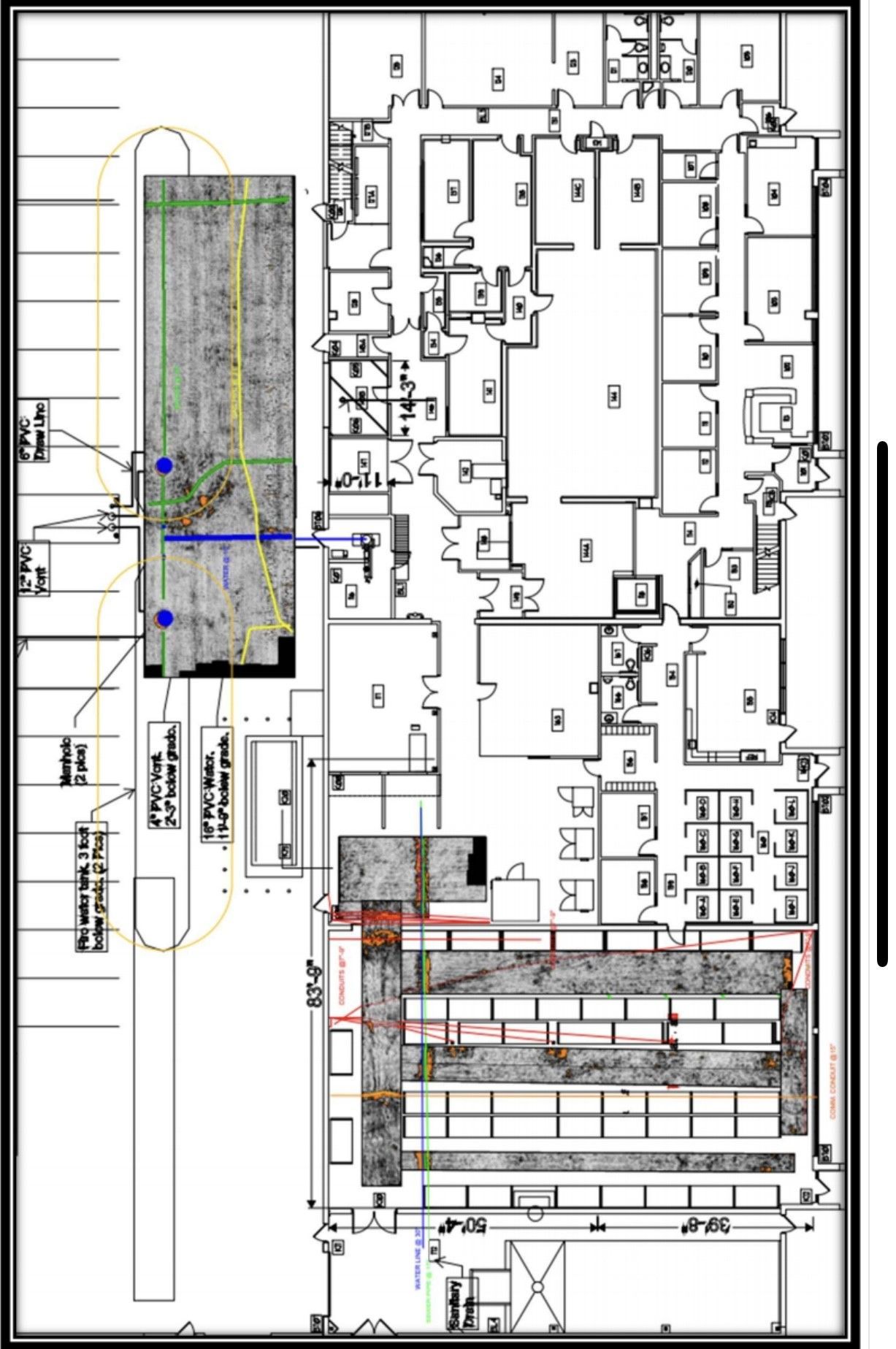concrete scanning
Private EM and GPR Utility Locating
Underground Utility Locating
Utility locating is the process of identifying and marking the underground utilities such as water pipes, gas lines, electrical cables, and telecommunications cables. This is done to prevent accidental damage to these utilities during construction or excavation projects.
Utility locating is typically performed using specialized EM and GPR equipment to accurately locate and mark the utilities' positions. This helps ensure the safety of workers and the integrity of the utilities.


Cobra can perform the following types of locates:
- Private Utilities: Private utilities are utility lines that are not owned or maintained by the public utility companies. These can include lines for private water, sewer, gas, or electrical systems. To locate private utilities, you may need to hire a private utility locating company or consult with a professional surveyor who specializes in private utility locates.
- Secondary Utilities: Secondary utilities are utility lines that are not considered primary or essential services but still need to be located before excavation. These can include lines for irrigation systems, landscape lighting, or private communication lines. Contact the relevant service providers or consult with a professional to locate these secondary utilities.
Where We Work
We provide utility locating services across the Midwest. Don't see your city? Not to worry. Reach out to us about your job today!
Chicago, IL
Springfield, il
peoria, il
rockford, il
madison, wi
milwaukee, wi
appleton, wi
Indianapolis, in

Utility Locating Experts
During a concrete bridge deck inspection, several key areas are thoroughly inspected to assess the condition and integrity of the structure. These areas typically include:
-
GIS Exports
GIS exports refer to the process of exporting data or maps from a Geographic Information System (GIS) software to a different format or file type. GIS software allows users to create, edit, analyze, and visualize spatial data, such as maps, satellite imagery, and geospatial datasets.
Exporting GIS data can be done in various formats, depending on the specific requirements and intended use of the exported data. Some common GIS export formats include:
Shapefile (.shp), KML/KMZ, GeoTIFF (.tif), CSV, PDF
-
CAD Overlays
GPR and EM Locate CAD overlays refer to the process of overlaying GPR data onto a CAD software or drawing. This allows for the integration of GPR data with existing CAD drawings or models, providing a visual representation of the subsurface features detected by the GPR survey.
By overlaying GPR data onto CAD software, engineers, architects, and other professionals can gain valuable insights into the subsurface conditions and make informed decisions during the design and construction process. It allows for a better understanding of the existing infrastructure and potential conflicts or risks that may arise during construction.
-
Field Markings
Field Markings are used to show the location of all the utilities located on site.
-
Corrosion of Reinforcement
The condition of the steel reinforcement bars (rebar) is assessed for corrosion, which can weaken the deck's structural integrity.
-
Expansion Joints and Bearings
Expansion joints, bearings, and other connections are inspected to ensure proper functioning and to identify any wear or damage.
-
Spalling and Scaling
Spalling (chipping or flaking) and scaling (loss of the concrete's surface layer) are examined as they can lead to further deterioration.

Slide title
Write your caption hereButton
Slide title
Write your caption hereButton
stream c- multi channel gpr
To obtain the highest level of certainty when performing a Utility Locate, a Multi-Channel GPR unit can be used. The power of the system is that it can collect data in both directions with one pass. It can also locate trenches, voids, and buried train tracks.

Service Specs:
em locate Depth
10' or greater
Type of Cut
Straight Cut
Materials Cut
Concrete, Asphalt, Soil, Gravel etc.
Powered By
Ni/Cd or Li-ion battery
Dust control method
Yes
Best For:
Locating private utilities, buried tanks, unmarked graves, tree root systems, etc.
Receive a FREE Quote On Your Next Job
We pride ourselves on our commitment to complete client satisfaction and safety, and we have the reputation and track record to prove it.
Why Choose Us
We revolutionize the concrete sawing & drilling industry through our innovation & attitude, provide a level of service & passion that our customers, our employees & our community desire to experience.
Safety
Cobra emphasizes the importance of safety from start to finish of every project.
Relationships
Creating successful relationships while building trust during completion of all current projects and beyond.
Innovation
Better solutions and ideas to complete projects in a more timely and efficient manner.
bridge deck inspection FAQs
These FAQs provide a basic understanding of concrete bridge deck inspections and their importance in maintaining the safety and functionality of bridge structures. Specific details may vary based on the location and type of bridge.
-
How often should bridge decks be inspected?
The frequency of inspections varies depending on factors like the bridge's age, location, and traffic load. Generally, bridges are inspected every 1 to 2 years for routine assessments, with more frequent inspections for older or heavily used bridges.
-
What methods are used for bridge deck inspections?
Bridge deck inspections use visual inspections, non-destructive testing (NDT) methods like ground-penetrating radar and ultrasonic testing, and sometimes destructive testing for material analysis.
-
What are common signs of bridge deck deterioration?
Common signs include cracks, spalls, scaling, corrosion stains, exposed rebar, and surface roughness. These signs can indicate various types of deterioration and structural issues.
-
How is bridge deck corrosion addressed?
Corrosion mitigation may involve removing corroded concrete, applying protective coatings, or installing cathodic protection systems to prevent further corrosion of steel reinforcement.
-
What is the purpose of expansion joints in bridge decks?
Expansion joints allow the bridge to expand and contract with temperature changes while maintaining structural integrity. They prevent cracking and damage caused by thermal expansion.
-
Are bridge deck inspections disruptive to traffic?
Inspections can be scheduled to minimize disruption to traffic. In some cases, lane closures or temporary traffic control measures are implemented to ensure safety during inspections.
-
What happens if a bridge deck inspection reveals significant issues?
If significant issues are detected, engineers will develop a repair or maintenance plan to address them promptly. Depending on the severity, temporary load limits or closures may be necessary for safety.
-
How can preventive maintenance extend the life of a bridge deck?
Regular maintenance, such as sealing cracks, repairing minor damage, and applying protective coatings, can prevent deterioration and significantly extend the lifespan of a bridge deck.
-
Who conducts bridge deck inspections, and what qualifications do they need?
Bridge deck inspections are typically conducted by certified bridge inspectors who have undergone specialized training and have knowledge of structural engineering and materials science.
Google Reviews
james hertz

I used to work with the owner's father for many years, trusting the company with my life. They are committed to fair pricing and completing the job on time, often ahead of schedule—more so than anything else.
Request a Quote
Thank you for your interest in our services! We pride ourselves on our commitment to complete client satisfaction and safety, and we have the reputation and track record to prove it.
Request A Quote - Utility Locating Services
We will get back to you as soon as possible.
Please try again later.
90 E. Marquardt
Wheeling, IL 60090
Phone:
773-775-1111
410 E. Lafayette
Bloomington, IL 61701
Phone:
309-585-4997
601 S. 93rd St.
Milwaukee, WI 53214
Phone:
414-800-6278
1910 23rd Ave
Rockford, IL 61104
Phone:
815-227-9275
Website imagined and executed by RivalMind.
